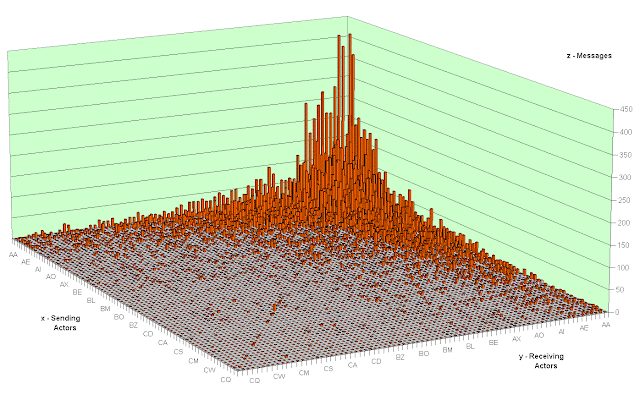In addition to the survey we talked about last time, I wanted to take a close look at interactions in the finalist newsgroups to seek for evidence of the Wenger dimensions. For instance, I wanted to look for textual evidence of collective problem solving among various participants of the newsgroups, as this was a telltale sign of Mutual engagement.
Of course, having one year of messages from 11 newsgroups meant that I needed some sort of sampling strategy in order to build a manageable textual corpus. I did have the advantage of knowing, from the core periphery analysis, who were they key players in each newsgroup. So I decided to sample complete discussion threads with high participation from core members and that addressed professional topics. I analysed 44 threads, containing 1497 messages, using codes that reflected the Wenger dimensions.
I found considerable evidence of the Wenger dimensions, with the exception of Community, which I did not detect in three newsgroups, and Joint enterprise, which I did not detect three others.
In order to be more confident of my results, I triangulated the results of the content analysis with those of the survey. After doing this, it turned out that in four newsgroups, all the Wenger dimensions were present, and each dimension was independently detected by the survey and the content analysis. Hence I classified these four newsgroups as Usenet-based Communities of Practice, since they lacked none of the attributes Wenger (1998) had described for colocated CoPs.
This study comprised my doctoral research, of which I published a summary in the journal Information Research. In my next post I will talk about the current directions I see VCoPs taking.
